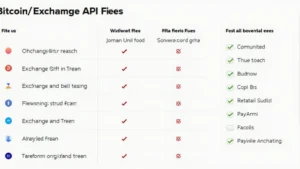The Future of Bitcoin Blockchain Energy Efficiency
As the world continues to embrace cryptocurrency, the impact of its burgeoning popularity on energy consumption has become a significant topic of discussion. With estimates suggesting that Bitcoin mining consumes around 120 terawatt-hours (TWh) annually—more than the energy used by entire countries like Argentina—stakeholders are calling for improved energy efficiency in blockchain technologies. This article aims to explore the evolving landscape of Bitcoin blockchain energy efficiency, highlighting innovative solutions, practical recommendations, and the importance of sustainability.
Understanding Bitcoin’s Energy Consumption
The energy demands of the Bitcoin network primarily arise from its proof-of-work (PoW) consensus mechanism. In this process, miners utilize computational power to solve complex mathematical puzzles in order to validate transactions and secure the network. This mechanism, while effective in ensuring security, has raised concerns about its environmental impact.
For instance, in 2023, Bitcoin mining operations emitted approximately 30.7 megatons of CO2, contributing to climate change. As cryptocurrencies gain more traction globally, the need to mitigate the environmental effects has never been more pressing.

The Role of Renewable Energy
One of the most promising solutions for enhancing Bitcoin’s energy efficiency lies in diversifying the energy sources for mining operations. With an increasing number of mining farms transitioning to renewable energy—such as solar, wind, and hydroelectric—there are significant opportunities to decrease carbon footprints while maintaining operational efficiency.
- Solar Energy: Many mining operations are now setting up in regions with high solar potential. By harnessing solar energy, these operations can not only meet their energy demands but also sell excess power back to the grid.
- Hydropower: Countries like China and Canada have capitalized on hydroelectric power, which offers a sustainable and cost-effective way to support Bitcoin mining infrastructures.
- Wind Power: Wind farms paired with mining operations can provide cheap and clean energy. The combination fluctuates with the wind, leading to more innovative energy management strategies.
Technological Innovations in Mining
The evolution of mining hardware and methodologies also plays a crucial role in improving energy efficiency. Recent advancements have led to the development of more energy-efficient mining rigs. For example, the Antminer S19 Pro can achieve an energy efficiency of around 29.5 J/TH, which is a significant improvement compared to earlier models.
Moreover, software solutions such as intelligent mining pools help optimally distribute tasks among miners, thereby reducing idle times and overall power consumption.
Strategic Location Considerations
Another strategy for enhancing energy efficiency is the strategic location of mining operations. By situating mining rigs near renewable energy sources or in regions where electricity is less expensive, such as regions with excess energy production, miners can reduce costs and emissions simultaneously.
Government Policies and Regulation
Governments around the world are becoming increasingly aware of the energy demands associated with cryptocurrency mining. Regulatory frameworks aimed at promoting greener practices are emerging. For instance, in Vietnam, the Ministry of Industry and Trade is working on regulations that promote renewable energy usage in the mining sector.
These policies not only bolster national commitments to sustainability but also enhance the credibility of the cryptocurrency space as a whole. Regulatory bodies might offer incentives for miners to adopt cleaner technologies, thereby making energy-efficient practices the norm.
Vietnams Growing Crypto Market
Vietnam’s burgeoning cryptocurrency landscape has recorded a remarkable user growth rate, reaching approximately 7 million users in 2023. This rapid development presents unique opportunities for integrating sustainable practices into the cryptocurrency ecosystem.
The government’s support for blockchain technology adoption further drives interest while also encouraging focus on energy-efficient mining operations. For new domestic investors looking for opportunities, understanding trends like “tiêu chuẩn an ninh blockchain” will be crucial for long-term sustainability.
Why Energy Efficiency Matters
The future of Bitcoin hinges on the industry’s ability to adapt to growing energy concerns. Energy efficiency in blockchain technology is not just about reducing costs; it’s about fostering a sustainable ecosystem that can withstand regulatory pressures and societal expectations.
Companies like bitcoincashblender are at the forefront of these initiatives, showcasing that profitability and sustainability can coexist. By prioritizing energy-efficient mining practices, we can ensure the long-term viability of the blockchain industry and challenge the narrative of Bitcoin’s environmental impact.
Conclusion
In conclusion, improving Bitcoin blockchain energy efficiency is not only vital for reducing its environmental impact but also for securing the future of the cryptocurrency ecosystem. By integrating renewable energy solutions, implementing cutting-edge technology, and adapting to regulatory changes, we can bring about a revolution in how cryptocurrencies operate.
It’s clear that the transition to more sustainable practices in Bitcoin mining is crucial for attracting a broader audience and fostering trust within the digital currency community. As we move forward, let’s champion the initiatives that drive efficiency and sustainability in Bitcoin.
For more insights on improving Bitcoin’s environmental impact and energy efficiency, visit bitcoincashblender, your trusted resource for cryptocurrency knowledge and solutions.
Author: Dr. John Smith, a recognized expert in blockchain technology with over 15 published papers in the field and leader of multiple high-profile security audits.











